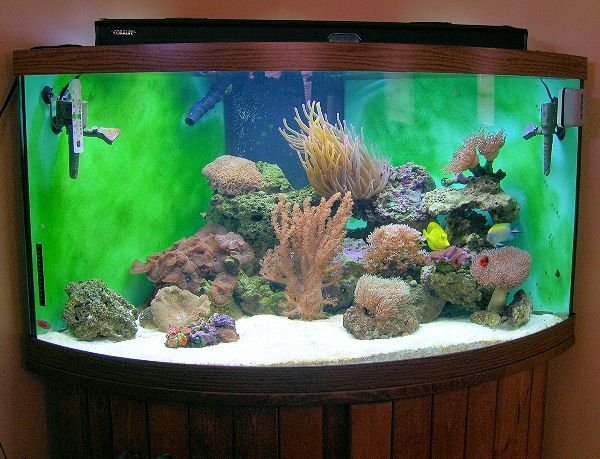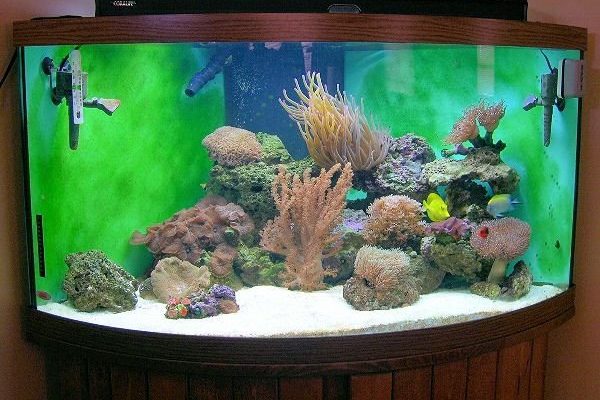
You might be wondering where to even start. There’s a lot to consider, from the tank size to water chemistry and what fish you want to keep. The good news is that I’m here to guide you through it all. We’ll cover each step in detail, breaking it down so you can feel confident and prepared. Let’s dive into this salty adventure together!
Choosing the Right Aquarium Tank
When starting a saltwater aquarium, the first thing to tackle is choosing the right tank. You might come across various sizes, but here’s the thing: bigger is often better. A larger tank gives you a more stable environment for your marine life. Think of it as giving your fish a spacious home rather than a cramped apartment.
For beginners, a 30-gallon tank is a great starting point. It’s manageable yet large enough to maintain stable water parameters. If you’re really serious and have the space, consider a 55-gallon or larger tank. While you’re at it, don’t forget to check out the tank’s material. Glass is popular due to its clarity and durability, while acrylic is lighter and less prone to breaking.
Another crucial aspect is how you plan to set it up. An aquarium with a front-to-back depth of at least 12 inches will allow for some interesting aquascaping, giving your fish room to swim and your corals room to grow. Once you settle on the tank size, remember to invest in a sturdy stand to support it.
Essential Equipment for Your Saltwater Aquarium
Now that you have a tank, let’s talk about the essential equipment you’ll need. Setting up a saltwater aquarium involves several key components to ensure a healthy environment for your aquatic buddies.
First on the list is a filter. A good filtration system keeps the water clean and removes waste products, much like a personal assistant for your fish. Next up is a heater to keep the water temperature stable, typically around 75-80°F. This is crucial, as many marine species thrive within this range.
You’ll also need a light source since many saltwater tanks include live corals and plants that require lighting for photosynthesis. LED lights are energy-efficient and can last a long time, making them a popular choice. Lastly, don’t forget a protein skimmer. This device helps to remove organic waste before it breaks down, which is especially helpful in a saltwater setup.
Setting Up the Aquarium: Step-by-Step
Setting up your aquarium might feel overwhelming, but let’s break it down into manageable steps. It’s like following a recipe—just take it one ingredient at a time.
1. Clean the Tank: Rinse the tank with fresh water (no soap!) to remove any dust or residues.
2. Add Substrate: Pour in the substrate, whether you choose sand or crushed coral, to create a natural bottom for marine life.
3. Install Equipment: Place your filter, heater, and any other equipment inside the tank, ensuring they are positioned correctly.
4. Add Water: Slowly fill the tank with saltwater. You can either buy pre-mixed saltwater or mix your own using salt mix and dechlorinated water.
5. Cycle the Tank: Before adding any fish, let the tank cycle for 4-6 weeks. This promotes beneficial bacteria growth, which is key to breaking down waste products.
During this cycling phase, test the water regularly to monitor parameters like ammonia, nitrites, and nitrates.
Choosing Fish and Invertebrates
Once your tank is cycled, it’s time for the fun part: selecting fish and invertebrates! Remember, not all marine life is compatible, so do a little research before making your choices.
Start with some hardy fish, like clownfish or damselfish. These species are generally resilient and can adapt well to new environments. If you’re interested in invertebrates, consider adding a few shrimp or snails. They help keep the tank clean by eating algae and leftover food.
Just keep in mind the space in your tank. Overcrowding can lead to stress and poor water quality, so follow the general rule of one inch of fish per gallon of water. Additionally, check compatibility. Some fish may not get along, leading to aggression or stress.
Maintaining Your Saltwater Aquarium
Once your aquarium is up and running, maintenance is key to keeping everything in tip-top shape. Think of it as regular check-ups for your aquatic friends.
Start by performing weekly water tests to monitor water parameters such as pH, salinity, and nitrates. A sudden change can harm your fish, so being consistent is crucial. Regular water changes of about 10-15% every week will also help keep the water clean and free of toxins.
Don’t forget about cleaning your equipment! Rinse your filter media in old tank water to avoid killing the beneficial bacteria. Regularly check your heater and pump to ensure they are working correctly, as a breakdown can quickly lead to a crisis in your aquarium.
Common Issues and Troubleshooting
Even with careful planning, you might face some bumps along the way. Here are some common issues and how to troubleshoot them.
If you notice your fish are acting strangely, such as hiding or swimming erratically, check the water parameters immediately. Stress or illness can stem from poor water quality. If you see algae growth, try reducing light exposure or adding algae-eating companions to your tank.
Another common problem is inconsistent temperatures. Ensure your heater is functioning correctly, and if not, consider replacing it. A reliable heater is crucial, especially during drastic climate changes outside.
Lastly, if you find unwanted pests like aiptasia (a type of anemone) creeping into your tank, you might need to employ some natural predators or treatments to keep them in check.
Final Thoughts on Starting a Saltwater Aquarium
Starting a saltwater aquarium is a rewarding experience filled with learning opportunities and joyful moments. It might take some time to get everything just right, but that’s all part of the adventure. Remember, patience is key—whether it’s waiting for your tank to cycle, watching your fish get comfortable, or finally spotting those little coral polyps expanding.
As you embark on this journey, don’t hesitate to reach out to fellow aquarists for tips and advice. Keeping a saltwater aquarium can be a lifelong passion, and the more you learn, the richer your experience will be. So, grab your gear and get ready to dive into an underwater world that you’ll absolutely love!

